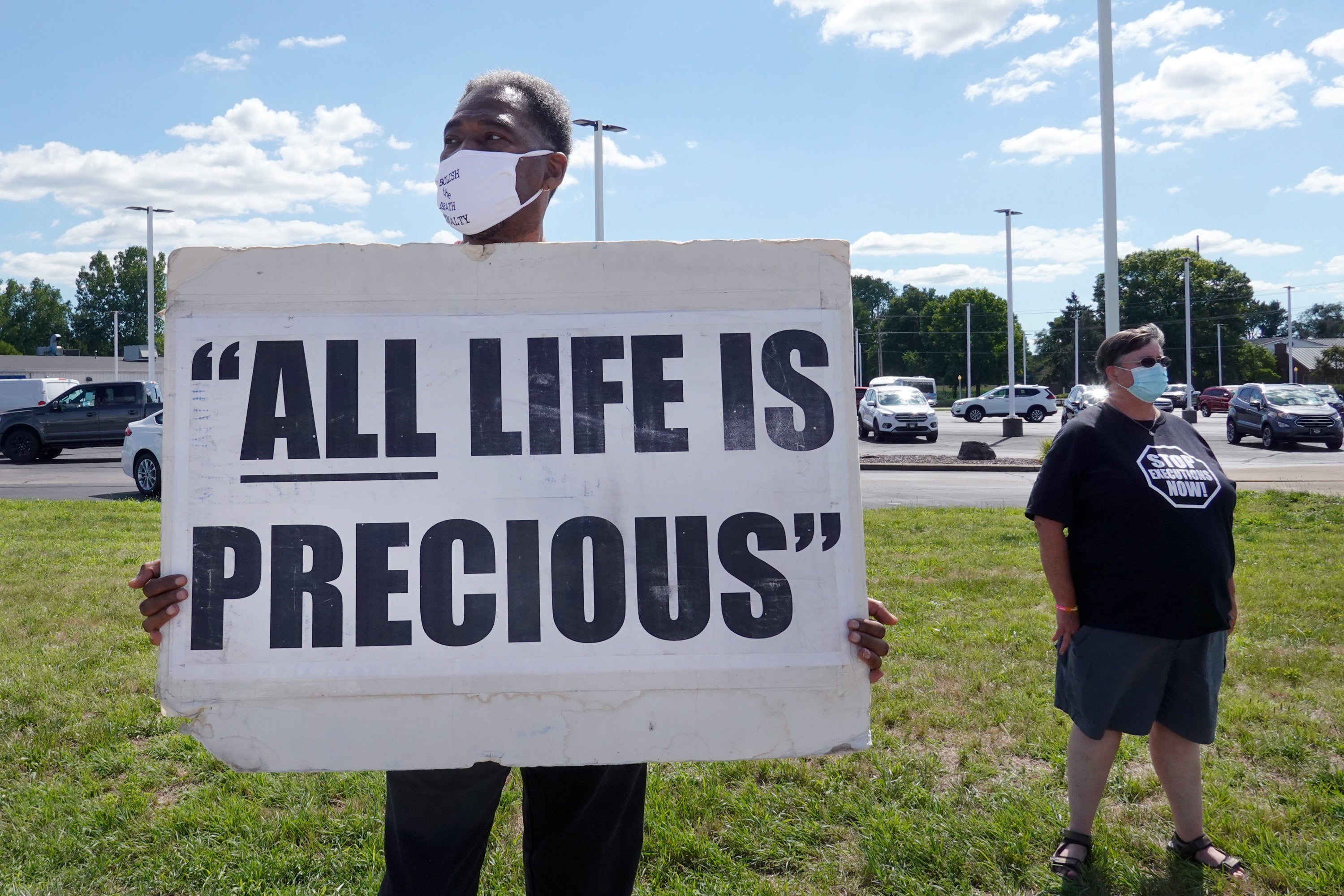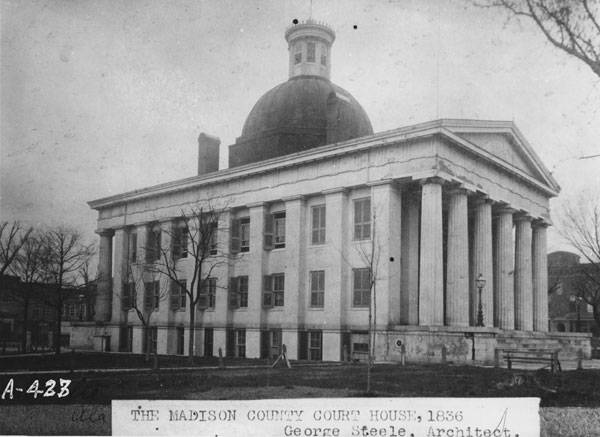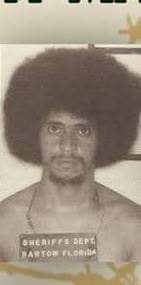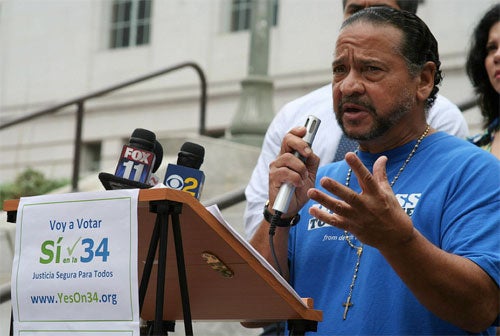The ‘stepchild of lynching’: How the death penalty targets Black people
Sites of historic lynchings closely mirror present day executions of Black people, writes Josh Marcus


Your support helps us to tell the story
From reproductive rights to climate change to Big Tech, The Independent is on the ground when the story is developing. Whether it's investigating the financials of Elon Musk's pro-Trump PAC or producing our latest documentary, 'The A Word', which shines a light on the American women fighting for reproductive rights, we know how important it is to parse out the facts from the messaging.
At such a critical moment in US history, we need reporters on the ground. Your donation allows us to keep sending journalists to speak to both sides of the story.
The Independent is trusted by Americans across the entire political spectrum. And unlike many other quality news outlets, we choose not to lock Americans out of our reporting and analysis with paywalls. We believe quality journalism should be available to everyone, paid for by those who can afford it.
Your support makes all the difference.In 1904, a violent mob set upon the jail in the city of Huntsville, Alabama, occupying the first floor and demanding the jailors release Horace Maples, a Black man accused of killing an elderly white farmer named John Waldrop. When police refused, the crowd set fire to the jail to smoke him out.
Armed men kept the fire department from putting out the blaze. A sheriff eventually made Maples jump out of the second-floor window into the throng of people below, estimated to be about 2,000 people strong. The lynch mob soon had a rope around Maples’s neck, and dragged him onto the county courthouse lawn.
Waldrop’s son confronted the panicked man. Maples admitted to the murder, though it’s hard to imagine a confession more forced. He was strung over a nearby tree. The crowd filled his body with bullets, then took his fingers and clothing as souvenirs.
Seven alleged members of the mob later went on trial, and all were acquitted.
A year after Horace Maples was lynched, the local chapter of the Daughters of the Confederacy installed a monument to Confederate soldiers in front of the courthouse, a reminder of just what justice meant in Huntsville for a Black man in 1904. It was replaced in the 1960s with a replica, during the height of the civil rights movement.

Lynchings may no longer terrorise the South in such great numbers, but America has never stopped feeding Black people through a system of rough justice that often uses public, exceptional violence to end their lives.
In the present day, the death penalty singles out people of colour by virtually every measure. More than just a passing similarity, though, the history of capital punishment in the US is tightly bound up with the rope and tree. Both are among America’s “peculiar” institutions.
Black people are vastly over-represented on death row. The US Black population is about 13 per cent in America, according to census data, while death row’s Black population was almost triple that, as of this spring. Those who kill white people are 17 times more likely to get the death penalty than those who kill Black people, according to a landmark 2020 study. Meanwhile, people of colour made up 63.8 per cent of modern wrongful death sentences, according to one analysis.
Beginning with the first executions that occurred in British colonies in North America to the present, capital punishment has always been applied unevenly, according to Elisabeth Semel, a law professor who heads University of California Berkeley’s Death Penalty Clinic.
“From its inception, in this country, the death penalty and racism were inseparable,” she told The Independent. “That history is defining. It just is defining.”
Disparities are found in nearly every facet of the process, in every location in the country that still practices the death penalty, she added: who gets accused of capital crimes; who gets good legal representation; who gets sentenced to death; and who is able to appeal the epidemic of wrongful convictions. Juan Melendez, 70, believes racism played a major role in sending him to Florida’s death row for a murder he didn’t commit. He was imprisoned for 17 years before being exonerated in 2002, after it was shown prosecutors witheld exculpatory evidence of another man confessing.
Born in Brooklyn, New York, and raised in his family’s native Puerto Rico, Juan went back to the US looking for adventure and opportunity when he turned 18 and went to work in American fruit fields on an agricultural visa programme.
“I was one of them looking for an American dream, and it turned out to be an American nightmare,” he said.
In 1983, he was accused of the gruesome murder of a white man, Delbert Baker, in a Florida cosmetology school. His trial lasted a week, and he had neither the money to hire a lawyer nor the English skills to know what was happening in the courtroom.
At first, he thought the legal system might catch its error and he would go free. Then the jury, 11 out of 12 of whom were white, started being shown pictures of the crime scene, where Delbert Baker lay, throat slashed, in a pool of his own blood.

“I knew right there and then that i was in big, big, big trouble. I got scared,” he said. “If they would’ve had the chance right there and then, I would’ve been hanged and executed.”
One of the jurors reportedly said that a photo of Juan, where he had a large afro, was what convinced her to find him guilty. He eventually learned English on death row. Juan now travels the country speaking with Witness to Innocence, an exoneree-led criminal justice advocacy group.

It’s no surprise the death penalty comes down so heavily on Black and brown people. It shares its roots with lynching, an explicit form of racial violence.
Before the Civil War, Black people were executed for a litany of crimes that elicited only minor punishment for whites. Wherever US armed forces expanded, whether it was against the Mexican borderlands or the indigenous communities of the Midwest plains, mass executions followed.
Following the end of the Reconstruction period, which saw federal troops occupy the former Confederate states and enforce new legal and constitutional protections for Black people, lynching surged in the late 1800s, until it became all but a daily occurrence across America.
Lynchings sometimes involved government officials like local law enforcement, and government officials began arguing for capital punishment as an alternative. It would still satiate the public’s appetite for violence against Black people, but under the auspices of the law, which at the time allowed for explicit racial segregation in all areas of life. Public legal hangings continued well into the 20th century.
In 1906, for example, US President Theodore Roosevelt criticised the “epidemic of lynching and mob violence” while perpetuating the most central lie its mob told themseves, that Black men were uniquely violent, sexual criminals.
He called for “even-handed justice” and treating rape as a capital crime, while noting, “The greatest existing cause of lynching is the perpetration, especially by Black men, of the hideous crime of rape,” Mr Roosevelt.
During the 1919 “Red Summer,” local soldiers and vigilantes killed 200 or more Black people in Phillips County, Arkansas, many of them African-American soldiers returning from World War I, who had been meeting hoping to organise for better pay for sharecroppers. None of the white people who first fired at the meeting, triggering a gunfight, were prosecuted, but dozens of Black men were charged with murder. Officials headed off a second mob by promising to execute the Black men who had survived the first.
Eventually, lynchings faded, but the dynamics of them – white outrage, swift judgement, Black death – remained. Between 1945 and 1965, Alabama, Arkansas, Florida, Georgia, Louisiana, South Carolina, and Tennessee, convicted a combined 823 Black men of rape, and executed 13 per cent of them. In that same period, only 442 white men were convicted and just 2 were per cent killed.
Bryan Stevenson, the renowned capital defense attorney and Equal Justice Initiative founder, has called the death penalty the “stepchild of lynching”.
In the present, states of the former Confederacy carry out 80 per cent of all current day executions, and data visualisations show the sites of historic lynchings closely mirror present day executions of Black people. The proportion of people of colour on death row has been increasing since the 1980s.
Little by little, criminal justice advocates have been able to make the present-day legal system reckon with the worst excesses of these overwhelming historic trends. In 2003, Illinois governor George Ryan granted clemency to the 163 men and women on the state’s death row, citing disproportionate punishments and growing evidence Chicago police commander John Burge and his lieutenants tortured more than 100 Black suspects into giving false confessions.
“Race plays a huge role in all of it,” Lauren Myerscough-Mueller, of the University of Chicago’s Exoneration Project, said. “John Burge and his subordinates were by and large doing this to young Black men, the vast majority. That was kind of just how they worked. One of the things that they thought was that if they were in certain neighborhoods, the thought was, ‘Well, these guys are probably in gangs and should be off the street anywho, what does it matter if we get the wrong one?’”
Still, given the lengthy time period of most capital cases, which regularly stretch across multiple decades, many such flagrant abuses of the system are influencing ongoing death sentences. In the controversial case of Julius Jones, a Black man who argues he was wrongly convicted as a teenager for the 1999 murder of a white businessman in the Oklahoma suburbs, a juror reportedly said the trial was a “waste of time” and that police should “just take the n****r out and shoot him behind the jail”, before being allowed to remain on the case.
Other instances of bias are more subtle, though no less influential.
Cases often rest on eye-witness testimony, which has been shown scientifically to be unreliable, and which is particularly ineffective when people attempt to identify others outside of their ethnic group.
Prosecutors are allowed to screen potential jurors to make sure they are, in the strange argot of capital punishment, “death-qualified” – that is, to serve in a capital case, jurors must not be fundamentally opposed to the death penalty. Public support for the death penalty has been declining for decades to near record lows, yet those more likely support the death penalty, who tend to skew white and conservative, end up most likely to be weighing the life and death of the people of colour most likely to be executed.
In the face of such obstacles, however, the Supreme Court has largely barred systemic analysis of the racism death penalty in legal cases. For a time, following the 1972 Furman decision, the death penalty was considered unconstitutional “cruel and unusual” punishment under the Eighth Amendment, with justices arguing it was both applied arbitrarily and discriminatorily. However, a decision only a decade later changed all that.
In the 1987 case McCleskey v. Kemp, the high court rejected a suit challenging the death penalty on the grounds it was applied unequally in Georgia, backed up by the groundbreaking Baldus study showing just how persistent racial disparities were in capital cases.
The court said it accepted the findings of the study, but rejected the overall notion of the lawsuit, that systemic bias meant death penalty convictions were unconstitional, according to Ms Semel, the Berkeley law professor. This largely shut the door to large-scale interrogations of official action regularly seen in other areas of law like housing or affirmative action policy.
“If defendants can come in and say the death is discrimination, the next thing you know, they’ll be saying that the way in which robbery cases are conducted is discriminatory,” she said, explaining the majority’s thinking. “They’re going to be coming in saying the way drug cases are conducted is discriminatory, which in fact they did. The decision with McCleskey proved to be enormous.”
At the time, Justice William Brennan dissented that the court seemed to be acting from a “fear of too much justice”. When he retired, Lewis Powell, author of the Court’s majority opinion, said he regretted casting his vote in the case.
There are some signs that America is leaving behind the death penalty, at least as the historic lynching-adjacent creature it has been for the last two-and-half centuries. Joe Biden is the first sitting president to oppose the death penalty, though he hasn’t taken any steps besides pausing federal executions to effectuate that goal. Earlier this year, Virginia, one of the country’s most prolific executioners of Black people, became the first Southern state to abolish the death penalty.
In a strange twist in the history of racial violence, now men accused of hate crimes are being put to death, rather than the executions themselves being hate crimes. The men accused of carrying out the 2015 shooting at a Black church in Charleston and the mass killing of Asian-American women in Georgia this March are both facing the death penalty. Dylann Roof, the Charleston shooter, is the first person in the US ever sentenced to death for a federal hate crime.
Still, the US is far from exercising the death penalty, or vestiges of hate violence, from the justice system. After a series of botched killings, Oklahoma plans to resume executions after a six-year pause. Julius Jones is scheduled to be one of the first men killed. After more than two decades, Arizona plans to resume executions via gas. It has purchased ingredients to make hydrogen cyanide gas, the chemical agent used in the Nazi gas chambers.
The history of the death penalty is ongoing then. More than 2,500 people are on death row right now.
One place has certainly changed, though. In 2020, Huntsville, Alabama, officials decided to relocate the Confederate monument from the courthouse lawn where Horace Maples was lynched, amid the year’s historic racial justice protests.
It is no longer a symbol of what justice is supposed to look like. The statue has a new home: it stands among the ghosts of Confederate soldiers at the local cemetery.
The Independent and the nonprofit Responsible Business Initiative for Justice (RBIJ) have launched a joint campaign calling for an end to death penalty in the US. The RBIJ has attracted more than 150 well-known signatories to their Business Leaders Declaration Against the Death Penalty - with The Independent as the latest on the list. We join high-profile executives like Ariana Huffington, Facebook’s Sheryl Sandberg, and Virgin Group founder Sir Richard Branson as part of this initiative and are making a pledge to highlight the injustices of the death penalty in our coverage.
Join our commenting forum
Join thought-provoking conversations, follow other Independent readers and see their replies
Comments